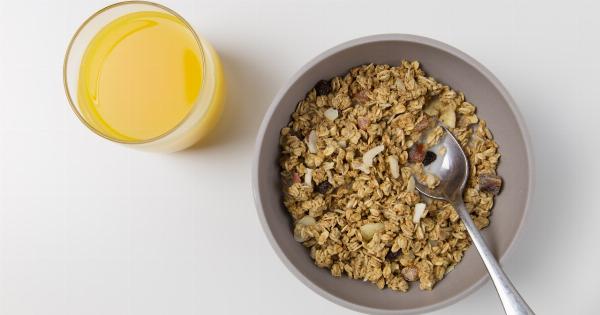Fiber, also known as roughage or bulk, is an essential nutrient that plays a crucial role in maintaining optimum health. It is a type of carbohydrate that is found in plant-based foods such as fruits, vegetables, legumes, whole grains, nuts, and seeds.
Unlike other carbohydrates, fiber is not digested by the body but instead passes through the digestive system. Although fiber does not provide calories or nutrients, it has numerous health benefits, especially for the digestive system. In this article, we will explore the digestive powerhouse that is fiber.
Types of Fiber
Fiber can be classified into two types: soluble and insoluble fiber. Soluble fiber dissolves in water, forming a gel-like substance. It is found in fruits, vegetables, oats, legumes, barley, and psyllium.
Soluble fiber is known to lower cholesterol levels, regulate blood sugar levels, and improve bowel movements.
Insoluble fiber, on the other hand, does not dissolve in water. It is found in whole grains, nuts, seeds, and vegetables, such as cauliflower, green beans, and celery.
Insoluble fiber promotes bowel regularity and helps prevent constipation by adding bulk to stools.
How Fiber Works
When we eat fiber, it travels down the digestive tract, passing through the mouth, esophagus, stomach, and small intestines, arriving at the colon (large intestine).
At this point, the bacteria present in the colon begin to digest the fiber, breaking it down into short-chain fatty acids (SCFAs). These SCFAs provide energy for the cells lining the colon and help maintain the health of the gut microbiome. SCFAs also stimulate the production of mucus, which provides a protective barrier for the colon cells.
Furthermore, the by-products of fiber fermentation increase the number of healthy bacteria in the gut, which improves digestion and strengthens the immune system. This is why consuming fiber-rich foods is essential for maintaining gut health.
Health Benefits of Fiber
1. Promotes Bowel Regularity
Fiber plays a vital role in promoting bowel regularity. Insoluble fiber, in particular, adds bulk to stool, which prevents constipation and reduces the risk of developing hemorrhoids.
On the other hand, soluble fiber softens the stool, making it easier to pass, and can help relieve diarrhea. Additionally, soluble fiber helps regulate the bowel movements of people with irritable bowel syndrome (IBS).
2. Lowers Cholesterol Levels
Research has shown that soluble fiber can help reduce LDL (the “bad” cholesterol) levels in the blood. The gel-like substance that soluble fiber forms binds with bile salts, which are made of cholesterol.
This binding prevents the reabsorption of the bile salts, reducing the amount of circulating cholesterol in the body.
3. Regulates Blood Sugar Levels
Fiber slows down the absorption of glucose into the bloodstream, which prevents blood sugar spikes and crashes. Soluble fiber, in particular, has been shown to regulate blood sugar levels and can benefit people with diabetes.
4. Maintains and improves gut health
Fiber acts as a prebiotic, feeding the healthy bacteria in the gut. The fermentation of fiber produces SCFAs, which help maintain the health of the cells lining the colon and promote the growth of beneficial bacteria.
A diet rich in fiber has been shown to reduce the risk of colon cancer, diverticulitis, and inflammatory bowel disease (IBD).
How to Incorporate More Fiber in Your Diet
The recommended daily intake of fiber is 25 grams for women and 38 grams for men. Unfortunately, most people do not meet this requirement. Here are some tips to help you incorporate more fiber into your diet:.
- Start with a fiber-rich breakfast, such as oatmeal or whole-grain cereal.
- Eat more fruits and vegetables, especially those with edible skins and seeds.
- Choose whole-grain options for bread, pasta, and rice.
- Add legumes, such as beans, lentils, and chickpeas, to your meals.
- Eat nuts and seeds as snacks or add them to salads or yogurts.
In Conclusion
Fiber is a vital nutrient that cannot be ignored. Its numerous benefits, especially for digestive health, make it a dietary essential. Incorporating more fiber-rich foods into your diet is an easy way to improve your gut health and overall well-being.






























